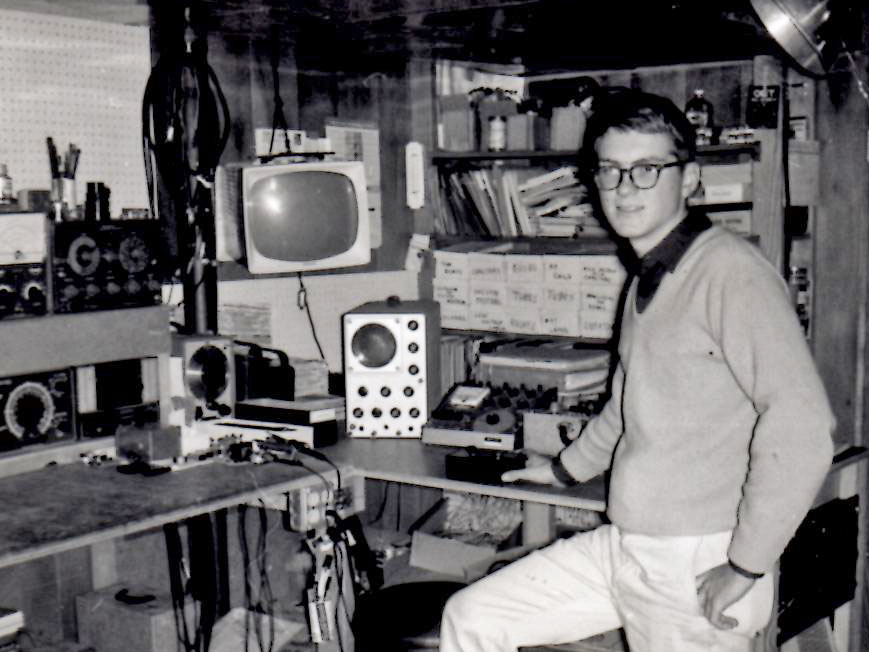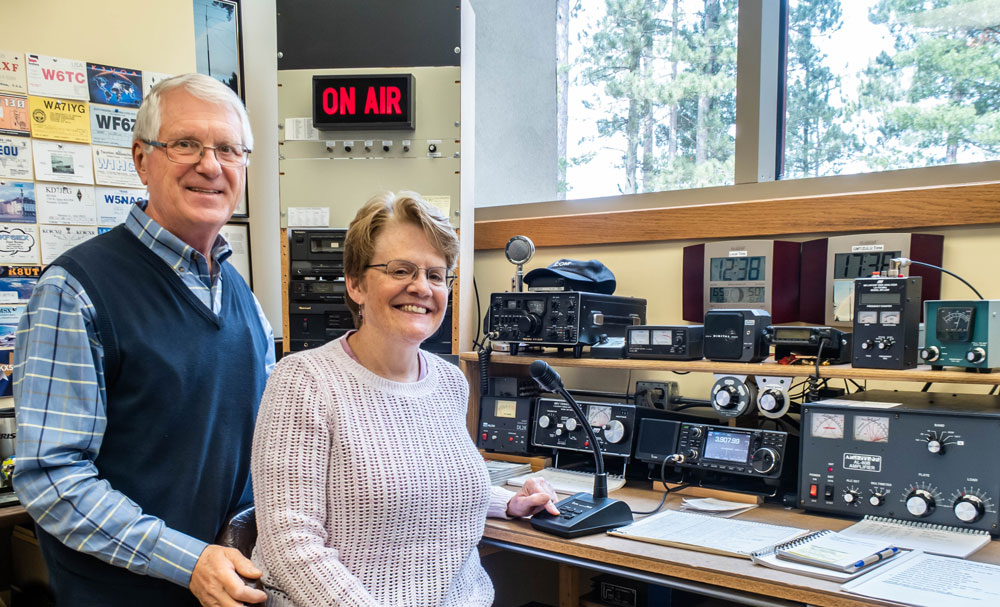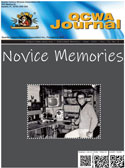This month’s cover
At the young age of 15, there
I was at an FCC office in St. Paul, Minnesota, taking a five
words per minute Morse Code exam for a Novice license. The FCC
examiner was “stone faced.” There was no telling how well I did
except that he gave me paper for the written exam. That meant I
had passed the code test! Examiners must have been poker players
in their off time. Then there was no indication of whether I
passed the written test when I finally exited the building,
shaking like a leaf. Two weeks later, a postcard arrived saying
I had indeed passed, but with a stern warning not to use my new
privileges before a callsign arrived. This was just before
Christmas in 1961. My WN0AXD license arrived in January. That is
when I got going to set up a station with a used Hammarlund
Super Pro receiver and a used Johnson Viking 1 transmitter. This
was before transceivers. There was a knife switch to select
receiver or transmitter into the antenna. Caption: Mark Persons
at his service bench in 1967.

My father, W0KNN, put up
a dipole for 40-meters in the attic of our home in Edina,
Minnesota and ran the cable to the basement where the station
was. I started to make contacts on CW and soon learned my
transmitter, running 75 watts, was wonderful at creating TV
interference. Viking offered a kit to reduce interference, but
that only helped a little. I experimented with an end-fed long
wire using wire from a TV receiver picture tube yoke coil. It
was from a discarded TV that I picked up from behind a local TV
shop. Old televisions were wonderful for parts to build
electronic devices. That was back in the day when anyone could
create a transmitter, receiver or an audio amplifier, from
parts. I still have at least one high-voltage power TV
transformer and two doorknob capacitors from back then.
One of my first contacts was with WN0AXF in Akeley, Minnesota,
about 180 miles distant. The log showed the operator was Bert.
The QSL came with the name Bertha. That was a shock. I received
a letter from the FCC saying I was about 2 kHz outside of the
Novice band. Ouch! That required a letter promising never to do
that again. My transmitter crystal needed adjusting, which I did
by disassembling the housing and carefully sanding down the
crystal to raise its frequency. Yes, this was a learning
experience that helped me through my career as a radio broadcast
engineer. Along the way, I enlisted in the U.S. Army and taught
electronics at Ft. Monmouth, New Jersey.
Then it was off
to Vietnam to be sergeant in charge on an avionics repair shop
in support of the Army’s OV-1 Mohawk, a high-tech surveillance
aircraft. With two 1400 horsepower turboprop engines, it flew a
pilot and radar operator over South Vietnam to find bad guys in
the jungles. Back in civilian life, I resumed the radio
broadcast engineering career that had been my goal since
childhood. For the record, almost no broadcast engineers climb
towers. That is left to trained and insured workers. Engineers
build and repair radio facilities, which include studios and
transmitter sites. I built 12 new ones along the way. At age 70
it was time to retire and let younger people go out to
troubleshoot transmitters in the middle of snowy nights. I now
mentor four broadcast engineers. None of them are hams and they
marvel at my knowledge. If they were hams, they would know a lot
of what I know in basic electronics and RF propagation.
It was about 25 years ago when my wife Paula finally became
interested enough to get a ham license. Her goal was to top my
father, now a Silent Key, who had an Advanced class license. She
went all the way to Extra, passing the 20 WPM code test. Her
musical ability helped in conquering the code. Nowadays you’ll
find me checking in on the QCWA Saturday morning net on 3908
kHz, which is heard in and around Minnesota on Saturday mornings
8-9am.
Editor’s note: Mark Persons, W0MH, is a retired
radio broadcast engineer, member number 36456 in the QCWA and
Life Member of the ARRL. He was first licensed as WN0AXD at age
15 in 1962. Mark received the Engineer of the Year award from
the Society of Broadcast Engineers in 2018 and their Lifetime
Achievement Award in 2020. He currently mentors four radio
broadcast engineers and is a member of the National Radio
Systems Committee, which developes improved technical standards
for radio broadcast and ultimate adoption by the FCC.

|
Emails:
06-01-2023:
Greetings Mark, Great article in the Journal. Hope
things are going well, Larry Larson KR0K,
Faribault, MN.
|
|



